Yaguas
I was looking down on Europe from a plane, and with a biologist’s eyes it is quite a depressive sight. It’s all towns and cities, agriculture and tree plantations, and roads. Untouched nature is a rarity, usually confined to mountainous areas.
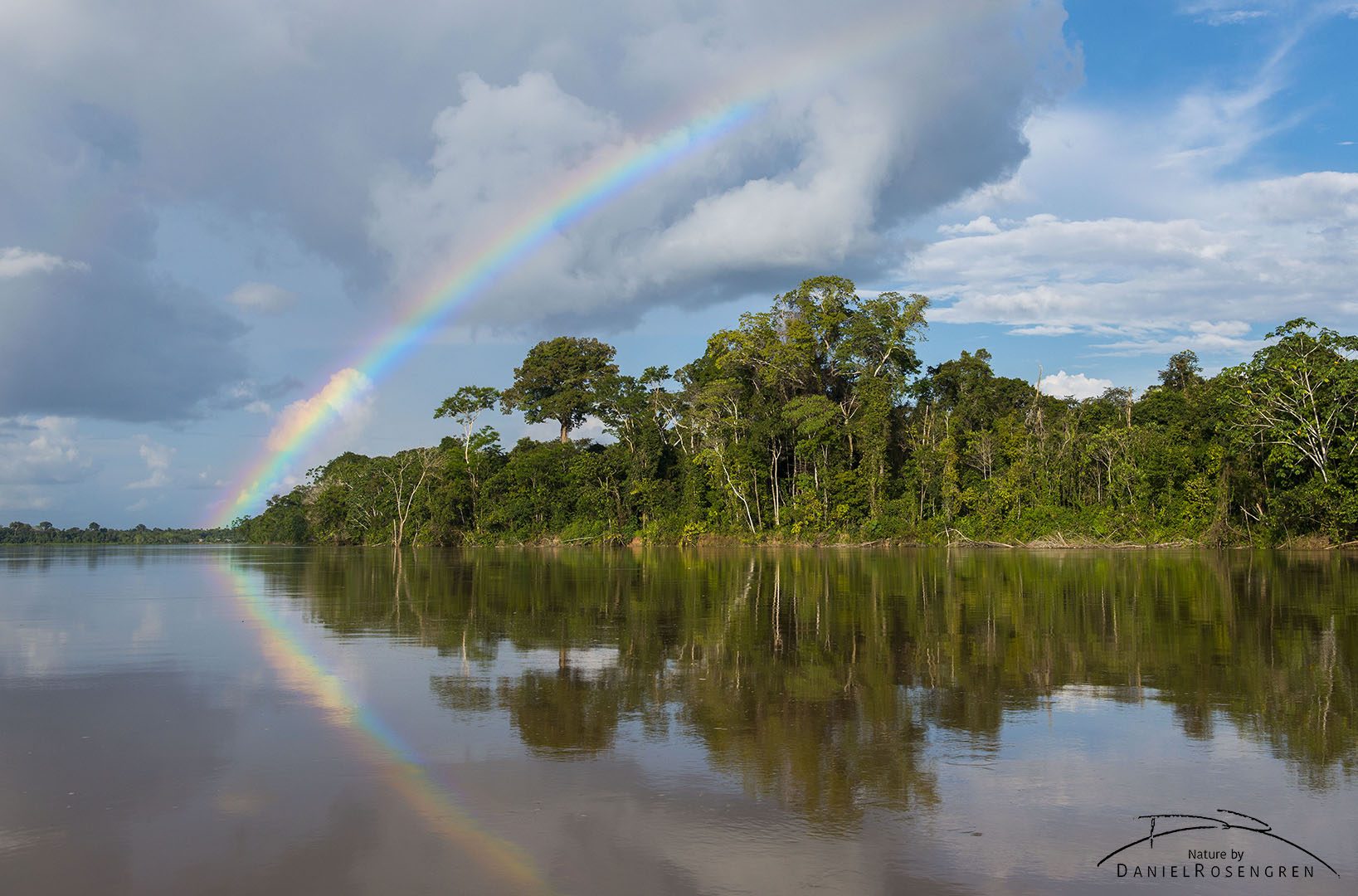
Rainbow over the rainforest. © Daniel Rosengren
A number of hours later, I was looking down on the Amazon. The contrast is striking, there is a lush green cover as far as the eye can see, settlements are absent or small, there are no, or very few roads, the only disruption of the green carpet is made by curvy rivers. It is vast, and, it is a hopeful sight. At least this is true for large parts of the Amazon. Sometimes the plane passed over areas where the landscape is being transformed. Where larger towns and roads have made their way into the Amazon, they seem to be spreading destruction around them. There are large clear cuts, or even complete removal of everything alive, only gaping holes remaining. I instantly get a worried feeling, thinking that this must be stopped, while it is still possible.
I was to be the first photographer ever to go to this remote corner of the world

Arriving with in Yaguas. © Daniel Rosengren
The impression of the incredible vastness of the Amazon was enhanced during the expedition to the Yaguas Reserve in the north-east corner of Peru. I set out with a team from the Frankfurt Zoological Society (FZS) and SERNANP (the Peruvian protected areas authority) officials to go to Yaguas. I was to be the first photographer ever to go to this remote corner of the world. The mission was to find a good spot to build a ranger station for the Yaguas National Park. For that is the plan, to turn the area into a national park in the near future.
We were travelling, in a small boat down the Putumayo river and then up the Yaguas river, from sunrise until sunset, not even stopping to have lunch. Still it took us four full days, just to arrive in Yaguas. It was about 750 kilometres driven, one way, with only a 40 horsepower engine. Once there, we explored the seemingly untouched area. At daytime, we followed animal trails through the dense rainforest, but the fact that the rainforest is pristine also makes it difficult to spot animals. From the boat, we had seen both howler and squirrel monkeys, two-toed sloths, and various birds. Both pink and grey river dolphins were commonly seen as they breached the surface of the river to breathe. A great abundance of Ospreys indicated a great richness of fish. In fact, there is no other place on earth with such an abundance of freshwater fish species, including one of the largest freshwater fish in the world, the Arapaima. But from the inside of the forest, spotting animals is difficult. A Red brocket deer dashed away from us through the dense vegetation, barely letting us see it, otherwise, not much life was seen.
At night though, the forest transformed, it was teaming with life. Equipped with headlights, José Antonia Ochoa, Claus Garcia, and I explored the nightlife of Yaguas. It appeared that the slower we walked, the more we saw. Insects with spectacular shapes and colours was found everywhere. There was no mistaking the repeated excitement of arachnologist José, every time he found a spider or a harvestman, and when a scorpion was found on the trunk of a tree, his happiness was complete. Various bird calls accompanied with insect sounds filled the air. Some sounds I could not determine whether they were from a bird, an amphibian, a mammal, or something else. Colourful lizards were sleeping on leaves and twigs in the cover of darkness. A mouse opossum seemed a bit confused in the sudden light from our lamps. In some shallow waters, we found an Anaconda, it was a rather large one and the sheer size of its head was impressive. With all that we had seen, it felt like we had walked a long distance, but the truth is, we never ventured very far from the campsite.
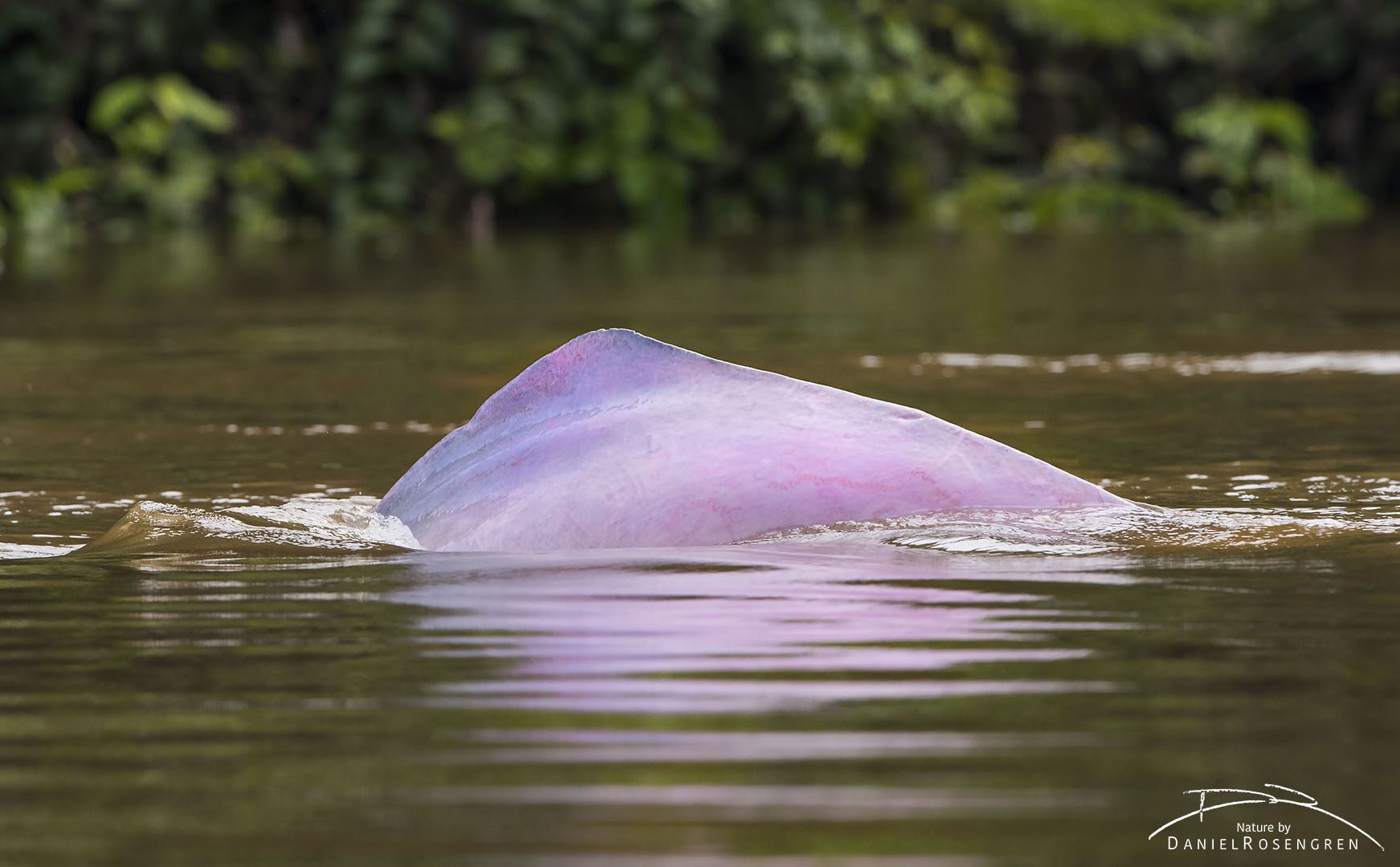
A Pink River Dolphin, one of the few freshwater cetaceans. © Daniel Rosengren
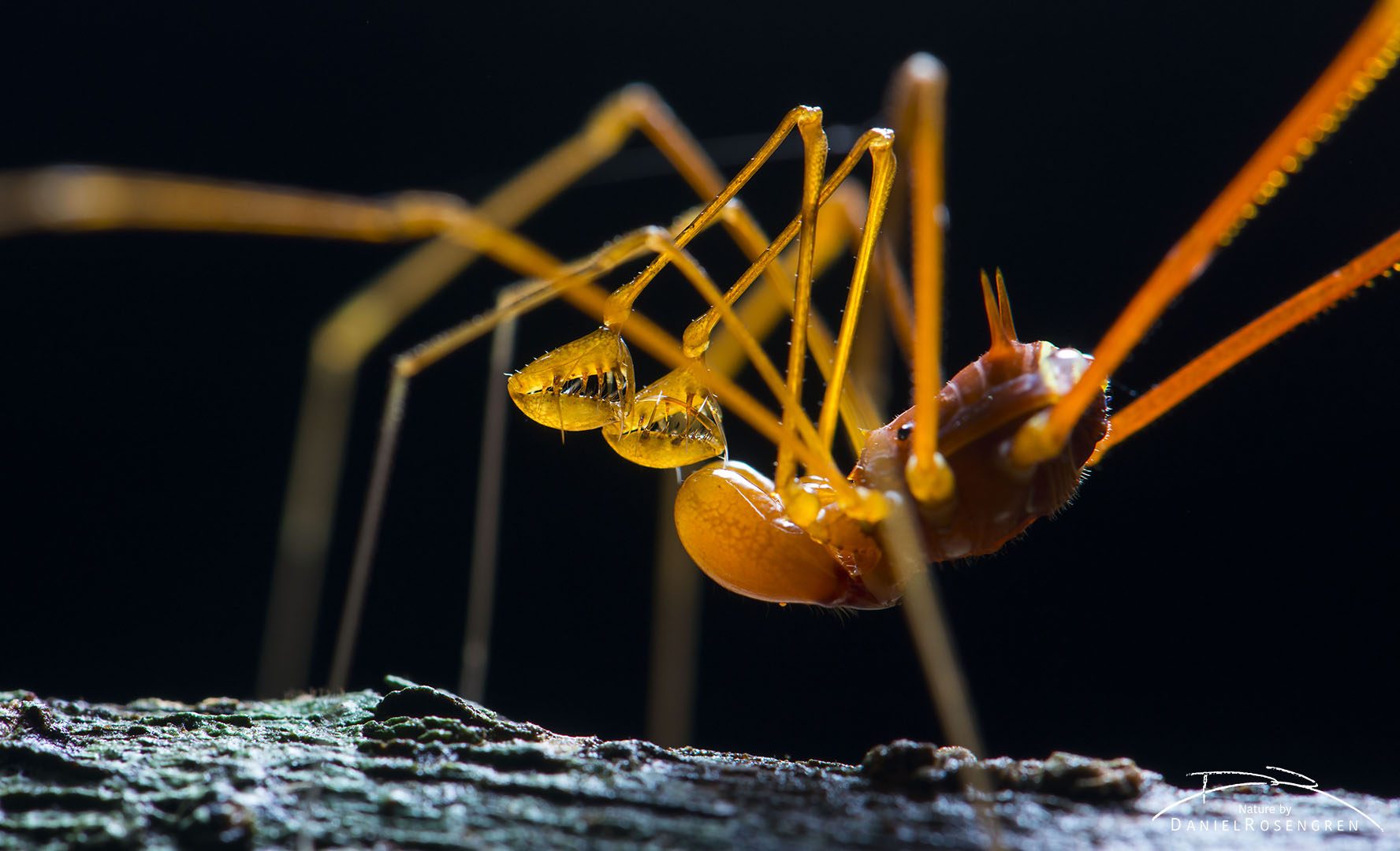
A harvestman with huge pedipalps as claws to catch prey, Yaguas. © Daniel Rosengren
In the morning, the songs of titi monkeys was heard from not far away. It is a strange sound that carries far in the rainforest, males start and females fill in in long duets. This is a manifestation of territory and soon enough, other groups of titi monkeys start responding from all directions around us. Walking around in the forest, it is easy to get the impression that no human has ever set his foot here before. But suddenly, we come across a young Ceiba tree that has be felled and cut into planks. Later in the day, we went to exploring the Yaguas by river.
It is quite different from the other areas in the Amazon that I know. There are no beaches and no erosion zones on the sides of the river. This river seems to have settled in its path, unlike for example the river Manu which is much more dynamic, constantly eroding the ground on one side and building new on the other, constantly creating new oxbow lakes and finding new paths, and constantly pulling gigantic trees into its stream and carrying them away. This gives the Yaguas river a very different look, both sides are covered with lush vegetation that extends far out into the water, it doesn’t seem to have changed much for a long time. But change might come, and it might come fast.
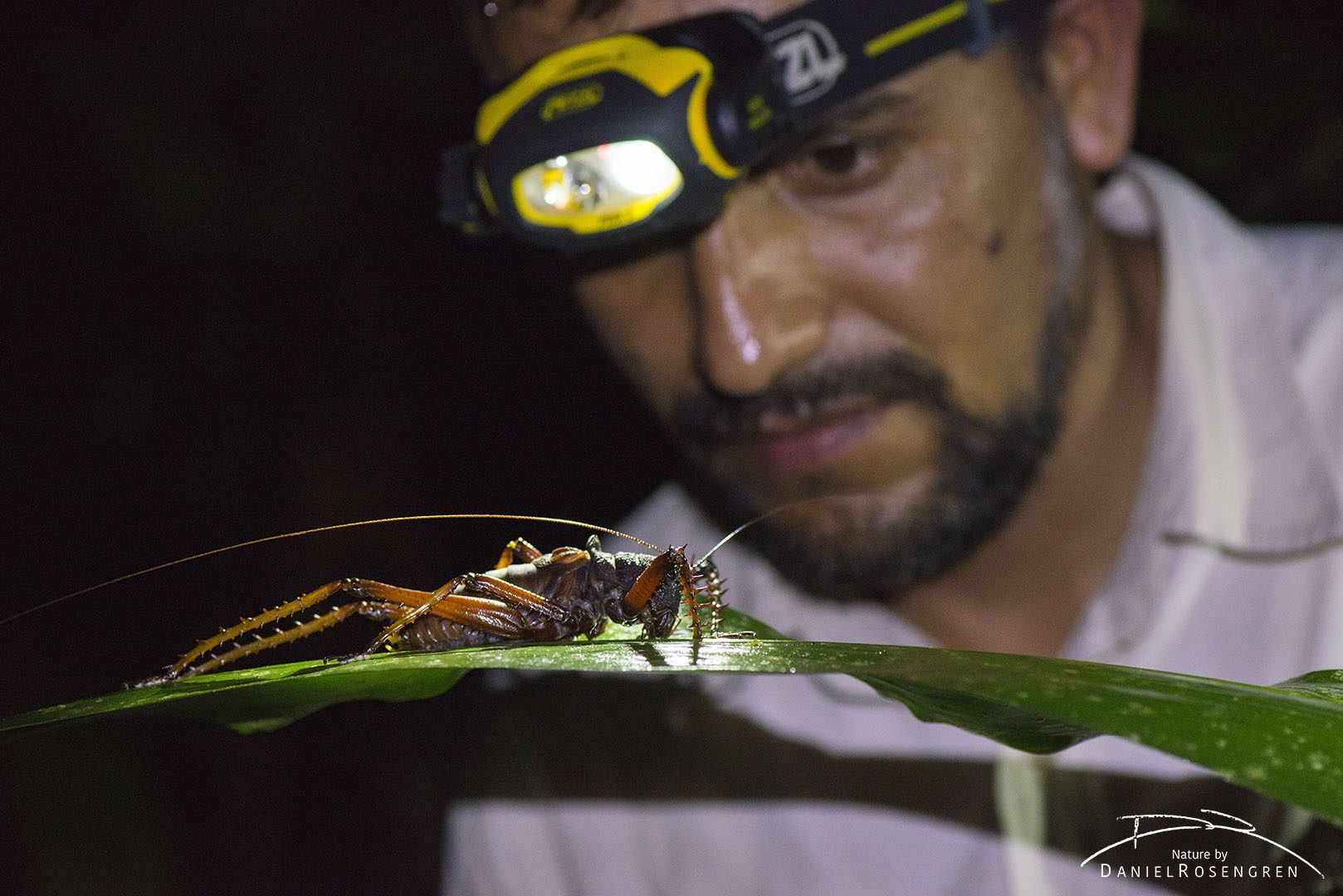
Claus Garcia and a giant Katydid in Yaguas. © Daniel Rosengren
At one place, we found a small tributary river to the Yaguas, a plastic bottle was floating on the surface of its mouth, this could have been a float for a fishing net. We stopped and decided to fly our drone over the area. As the drone ascended, a falcon came close and investigated it, probably wondering what it was. On our screen with livestreaming from the drone’s camera, our fears got confirmed. Not far away, just around the bend, three gold mining dredges were stationed. They were actually so close to us, that the people on them could probably hear us talking. This was a potentially dangerous situation, the gold miners knowing that they were illegally there, and us flying a drone over their heads. We retrieved the drone and moved on along down the river. In fact, on the next expedition to the Yaguas, the FZS and SERNANP team was ambushed and kidnapped by gold miners on the way in. Luckily, it all ended well with only material losses.
The next morning, we had to leave Yaguas, the long travel distances and difficulties to bring enough fuel forced us to leave. I left Yaguas with mixed feelings, it had been a true privilege to have gotten to see and experience a place almost untouched by humans. And there is no doubt that this is an amazing place with an extreme biodiversity both on land and below the water surface.
But the first signs of change are already there, gold miners have entered the area. They not only physically abuse the river and rainforest by cutting the trees and basically vacuum cleaning the soil for gold, but they also poison the system by using highly toxic mercury for the gold cleaning process. This mercury poisons everything in the water and anything having association with the water. This means that fish, dolphins, birds and people get poisoned by the mercury, and not only at the site, but as the river flows downstream, it brings the poisoning with it. If nothing is done quickly, more gold miners will come, and the area might quickly develop into a toxic desert, just as has happened in many other areas of Peru.
The good news is that things can and are being done. Like mentioned above, FZS in cooperation with SERNANP are working on having the Yaguas area turned into a national park soon, which will give it higher protection status and priority, and the plan is to build a ranger station by the river near the entry of the area. Since the Yaguas area is basically a single and complete drainage basin, all access to the area other than by boat on the Yaguas river is extremely difficult. That makes the area relatively easy to control. By controlling who enters and leaves by river at the border of the reserve, you basically control the whole area. So, one ranger station would be enough to protect Yaguas.
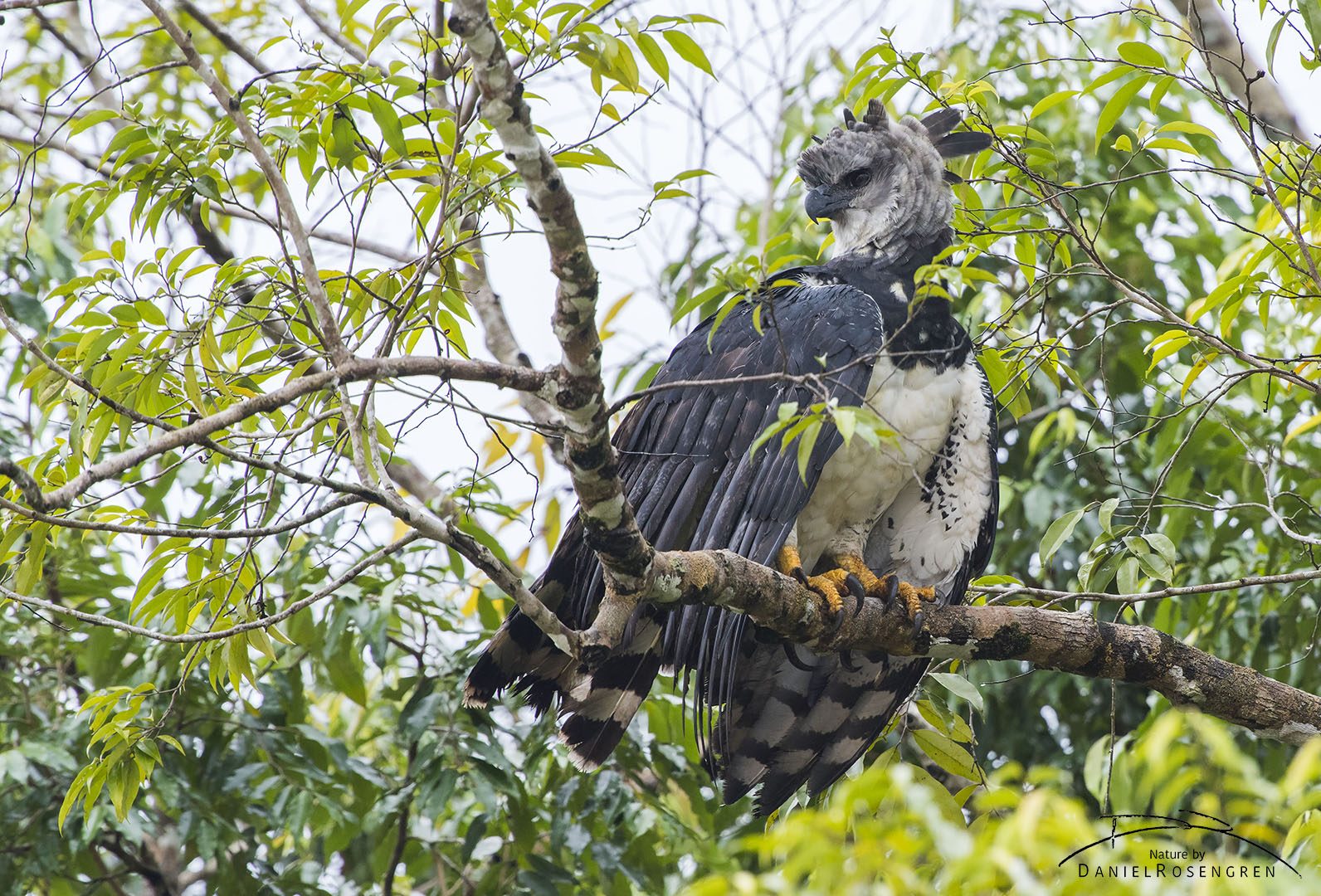
A Harpy Eagle seen along the River near Yaguas. © Daniel Rosengren
Once humans have established themselves in an area, it is very unlikely that nature will ever get it back. The areas I saw from the plane over Europe, are most likely lost to nature forever. Yaguas is a still great area, but at risk of soon getting overexploited and lost forever too. I am glad the Peruvian government in cooperation with FZS is acting now, before it is too late.
As a reminder of how great the Yaguas area is, a harpy eagle showed itself to us, perched in a tree by the river, as we left the area. This emblematic species is rare and difficult to see, symbolizing true wilderness.
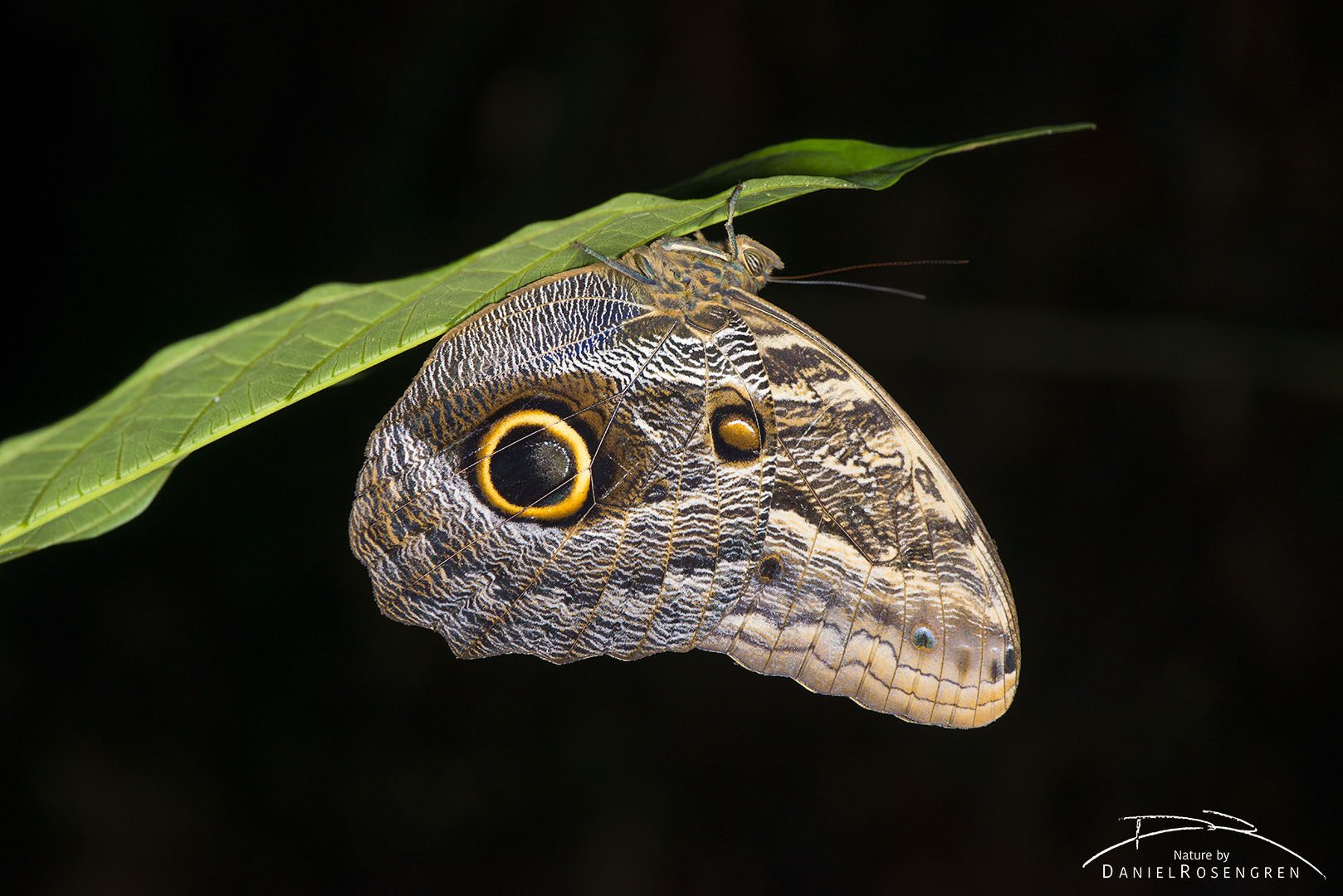
An Owl moth in the Yaguas. © Daniel Rosengren
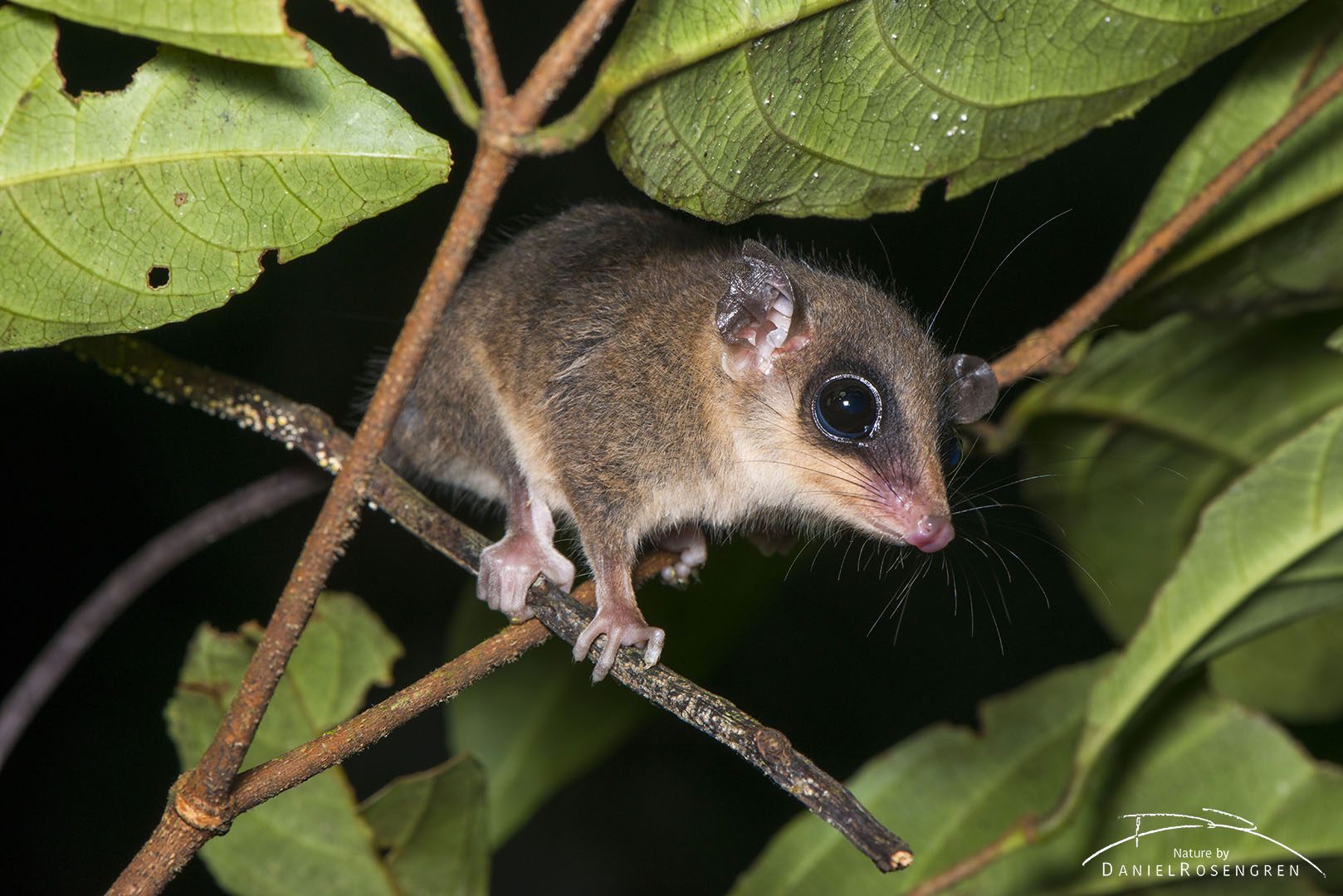
An opossum in the Yaguas. © Daniel Rosengren
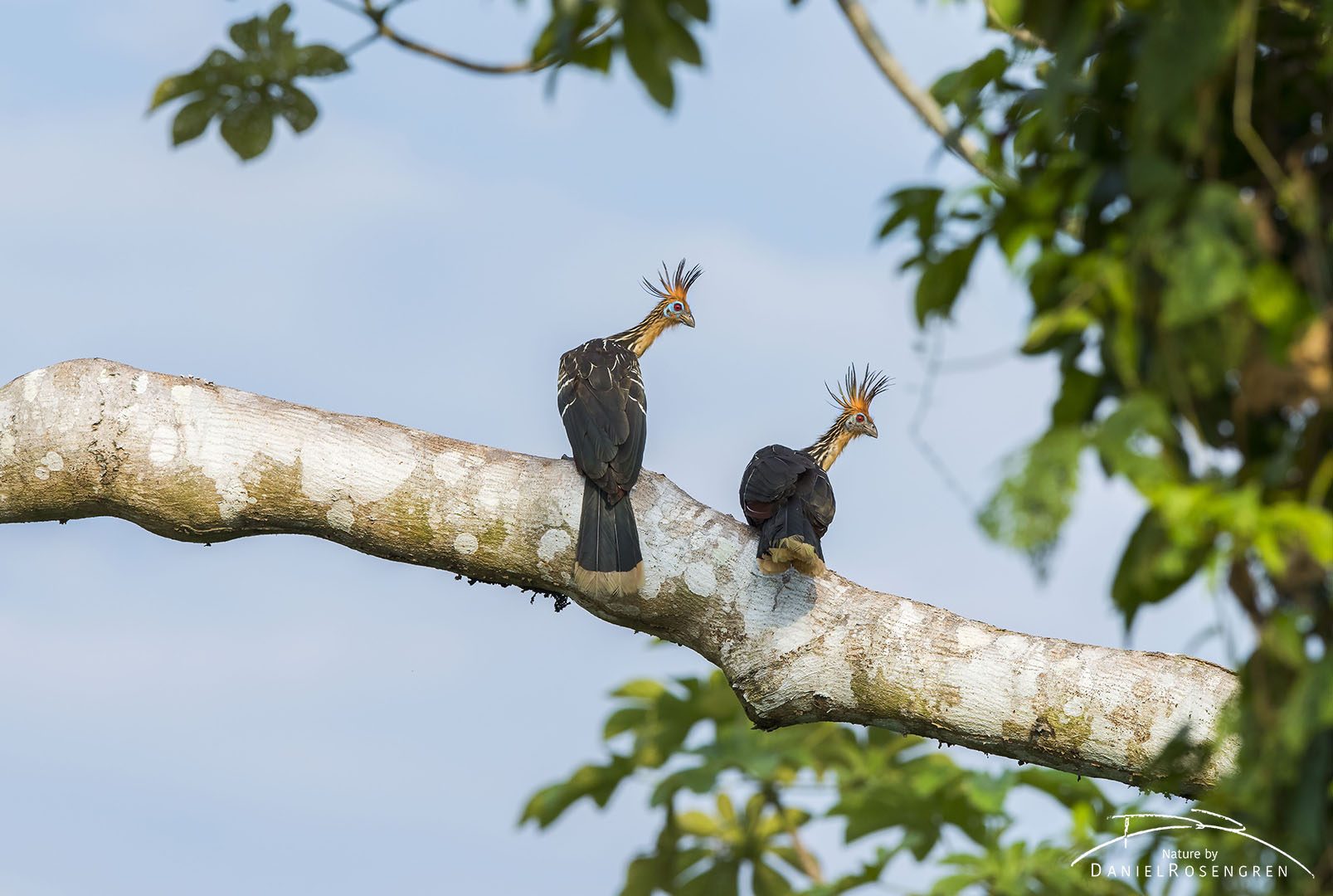
A pair of Hoatzins. © Daniel Rosengren
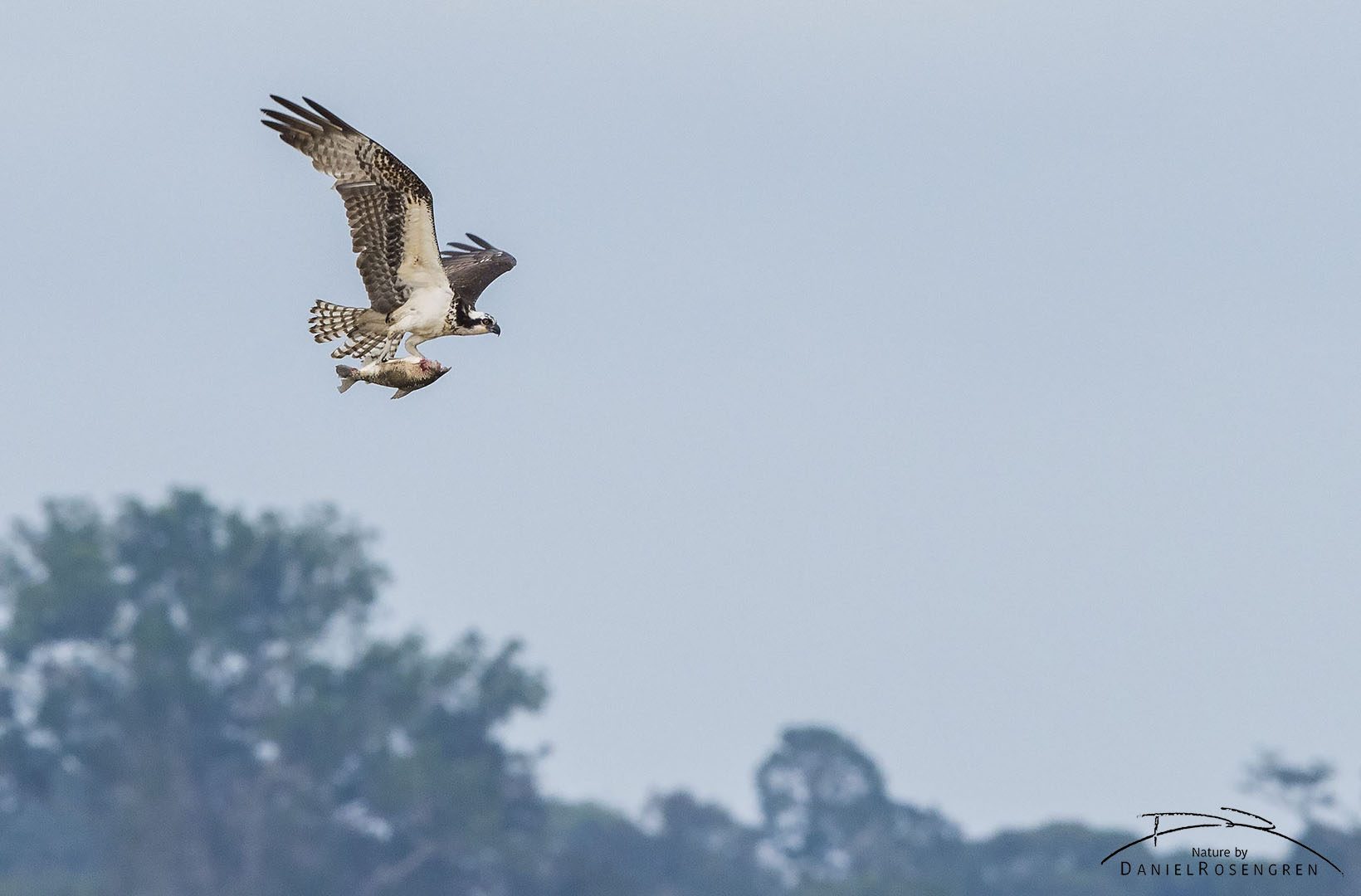
An Osprey with a fish over the river while approaching Yaguas. © Daniel Rosengren
See more photos in the Peru gallery
